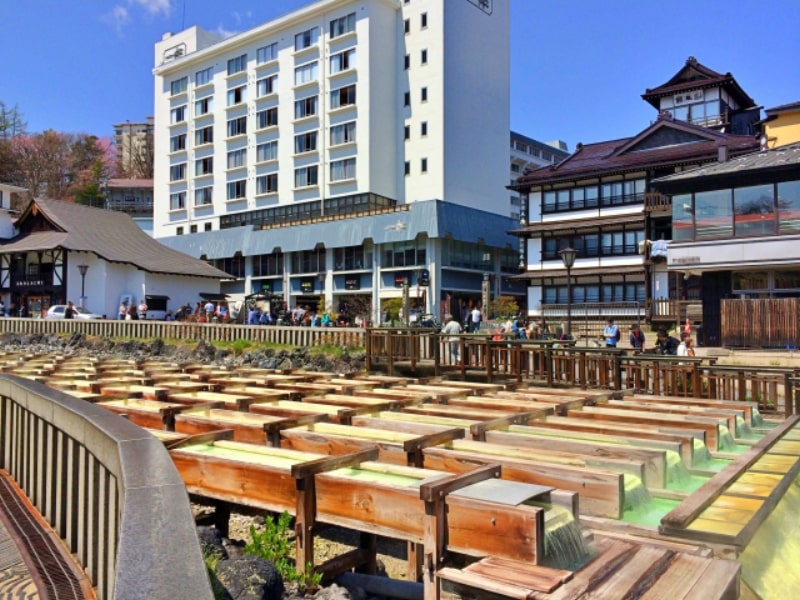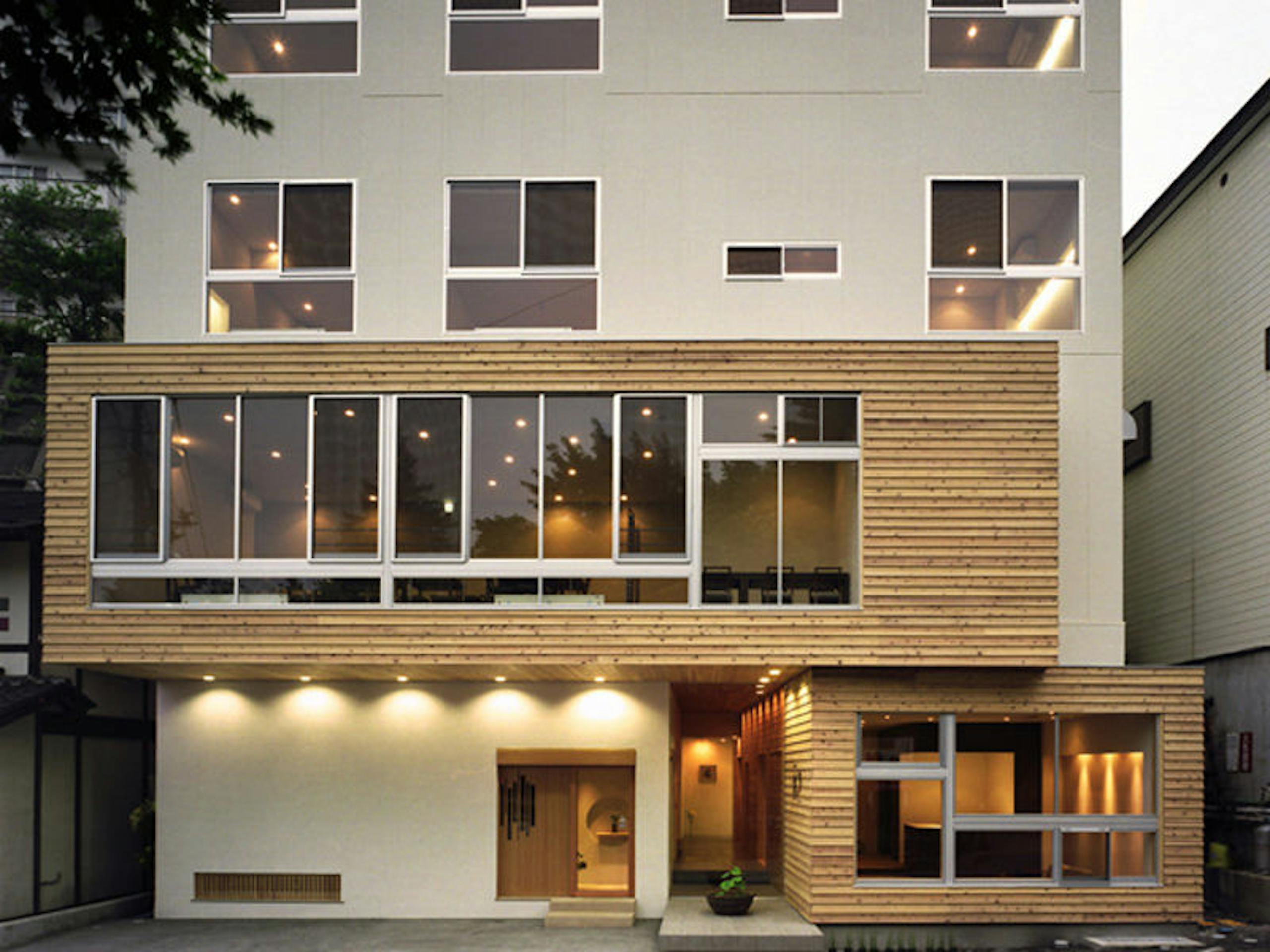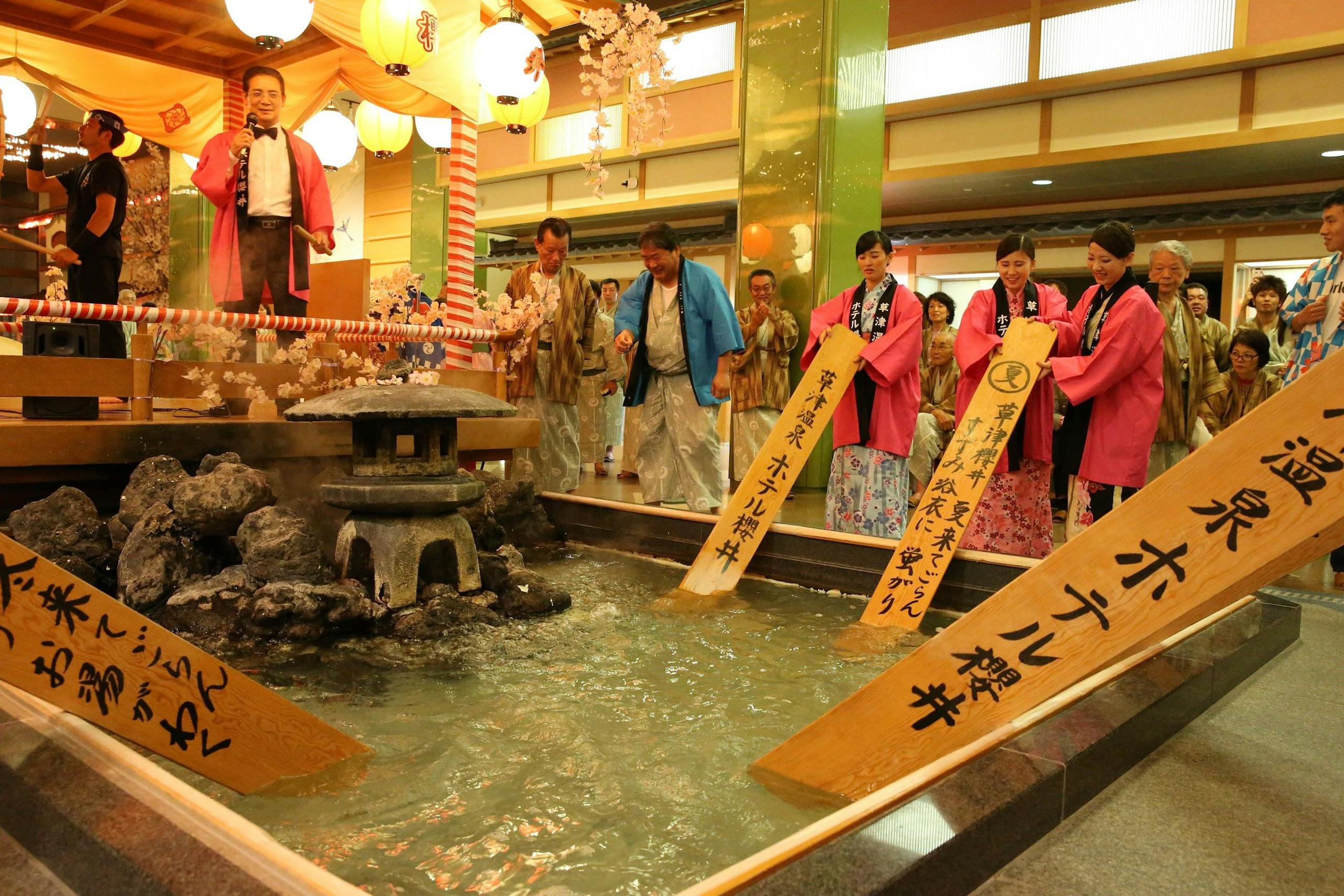

About Kusatsu Onsen
Kusatsu Onsen is located at the eastern foot of Kusatsu-Shiranesan, an active volcano in Gunma Prefecture, and has the largest volume of naturally gushing hot spring water in Japan at 32,300 liters per minute.
Therefore, many onsen ryokan have baths that are free-flowing from the source due to the abundance of hot spring water, allowing visitors to enjoy the benefits of the hot spring.
The symbol of Kusatsu Onsen, Yubatake, located in the center of the hot spring resort, gushes 4,000 liters of hot spring water per minute, and the sight of the hot spring water dancing in the air is overwhelming because of the high temperature of the source.
The high temperature of the hot spring water is cooled by exposing it to the open air here, and is then delivered to each onsen ryokan.
The hot spring is called “Yubatake” because sulfur, a hot spring ingredient, is collected several times a year from the wooden tubs that are placed in the Yubatake to adjust the temperature.
(PR)
Around Yubatake are ryokan, souvenir stores, and restaurants, making it a bustling tourist attraction.
The hot spring resort is not only around Yubatake, but also in the surrounding area, where visitors can enjoy strolling around the famous onsen manju (hot spring bun) stores.
At night, Yubatake is illuminated, which makes for a beautiful sight.
Access from Tokyo
Access to Kusatsu Onsen from Tokyo by train is as follows.
Route using Shinkansen
From Tokyo to Karuizawa by Hokuriku Shinkansen
1 hour and 10 minutes
From Karuizawa to Kusatsu
By bus: Kusakaru Kotsu/Seibu Kanko Bus: 1 hour 18 to 55 minutes
Route by JR Express
From Ueno to Naganoharakusatsuguchi
JR Express Kusatsu-Shima
2 hours 33 minutes
From Naganohara-Kusatsu-guchi to Kusatsu
JR bus 25 min.
Route by regular train
From Ueno to Takasaki
Takasaki line 1hr 45min
From Takasaki to Naganoharakusatsuguchi
Takasaki Line Azuma Line Regular Train
1 hour and 30 minutes
From Naganoharakusatsuguchi to Kusatsu
JR Bus 25 min.
There is not much time difference between using the Shinkansen and the JR limited express.
The JR bus from Naganohara-Kusatsuguchi Station is convenient as connections are made according to the arrival times of limited express and other trains.
Access from Tokyo by highway bus is as follows
From Tokyo Station or Shinjuku Station South Exit (Basta Shinjuku) to Kusatsu Onsen Bus Terminal
JR Bus Kanto Yumeguri-go
From Futakotamagawa/Shibuya Station to Kusatsu Onsen Bus Terminal
Tokyu Bus, Keio Bus
From Yokohama Station and Tama Plaza Station to Kusatsu Onsen Bus Terminal
Jointly operated by Tokyu Bus, Sotetsu Bus, and Ueda Bus
Kusatsu Onsen Bus Terminal from Omiya Station/Kawagoe
Blue Liner Kusatsu Onsen-go Koei Kotsu Bus
Kusatsu Onsen Bus Terminal from Kazo, Gyoda, Kumagaya
Yumeguri Saitama- Chichibu Railway Kanko Bus
From Tokyo/Ikebukuro Station to Kusatsu Onsen Bus Terminal
Dts line
Kusatsu Onsen Bus Terminal from Kichijoji
Kanto Bus/Kan-Etsu Kotsu
It takes longer than accessing Kusatsu Onsen by train, but the fare is cheaper.
Express buses go directly to Kusatsu, making it easy to get around.
Large luggage can be left in a trunk room.
About Sightseeing Spots
The following are some of the other sights you may want to see when you visit Kusatsu Onsen.
Nishi-no-Kawahara Park
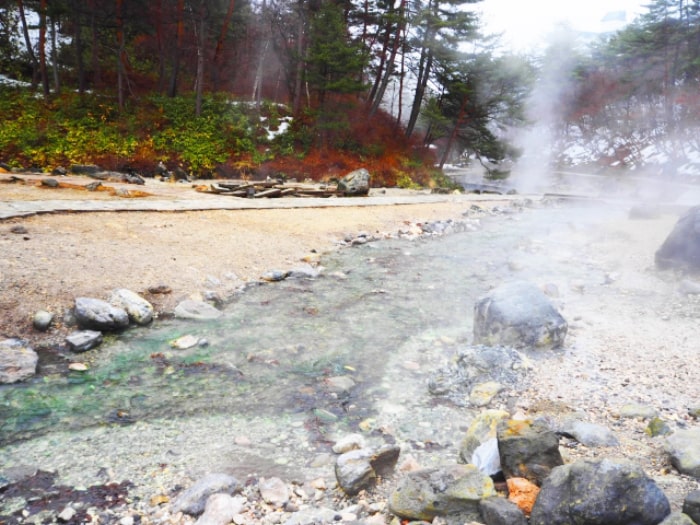
Nishi-no-Kawahara Park is one of the most popular tourist spots in Kusatsu, along with Yubatake.
The large riverbank has hot spring water spouting out from everywhere, and there is a hot spring pond with steamy water, which was once feared as a fountain of demons.
This area is also illuminated at night.
In addition, Nishi-no-Kawahara Park has a very large open-air bath, 500 square meters for both men and women.
Enjoying the open-air baths in Kusatsu in the midst of nature is also recommended, and you can soak in the hot spring while admiring the greenery in summer, the autumn leaves in fall, and the snow in winter.
(PR)
Kusatsu-Shiranesan's Yugama
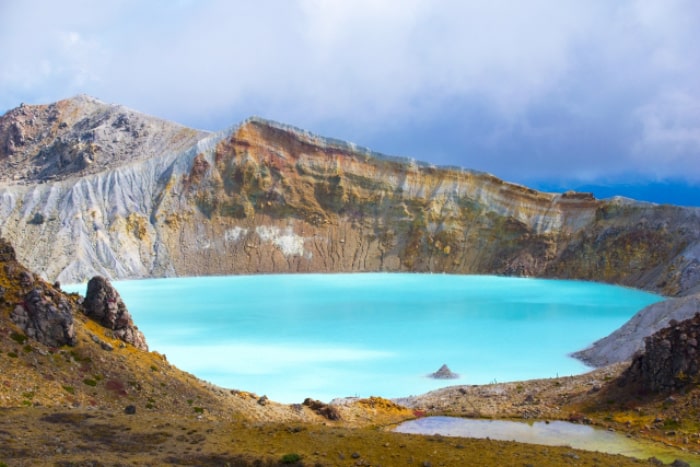
Yugama is a crater lake at the summit of Kusatsu-Shiranesan.
The crater lake, about 300 meters in diameter, is emerald green in color due to volcanic gases.
The area around the crater lake has a desolate atmosphere typical of volcanoes, and the beautiful scenery that becomes fantastically colored by the sunlight is otherworldly.
Entry to the area around Yugama is sometimes restricted due to increased activity and the eruption of volcanic gases, so please be sure to check.
Nishi-no-Kawahara Street
When visiting Kusatsu Onsen, a stroll along Nishi-no-Kawahara-dori, a street that runs from Yubatake to Nishi-no-Kawahara Park, is recommended.
Nishi-no-kawahara-dori is a street typical of an onsen town, with many onsen manju (steamed bun) stores, souvenir stores, and restaurants lining both sides of the street.
Wearing a yukata and geta (Japanese clogs) rented from a ryokan will make you feel like you are in a hot spring resort.
Atsunoyu
If you come to Kusatsu Onsen, you will want to see a show in which a long board is used for bathing to the accompaniment of Kusatsu-bushi, a folk song representative of Kusatsu Onsen.
Yumomi is a traditional Kusatsu tradition of using a long board to stir the hot water to lower the temperature so that visitors can take a bath.
You can see traditional differentiation at Atsunoyu, located just west of Yubatake.
(PR)
Touring the Hot Springs
There are many public bathhouses in Kusatsu Onsen, so it is recommended to visit them to experience the different types of hot springs.
Shirahata no Yu
Shirahata-no-yu is a public bath managed by the locals, where you can enter the Shirahata source for free.
(PR)
Gozanoyu
Oza-no-yu is a two-story wooden public bathhouse that is a reproduction of one of the five public bathhouses that existed in the Yubatake area from the Edo to Meiji periods.
Gozanoyu has two bathhouses, one for Yubatake and the other for Bandai, two different sources of hot spring water.
(PR)
Otaki no Yu
This is a one-day spa facility where visitors can bathe in the Nigawa source, and includes a large bath, an open-air bath, private baths, a private rest area, and a cafeteria.
Jizo Hot Spring
This is a public bathhouse managed by the locals that offers free access to the Jizo fountainhead.
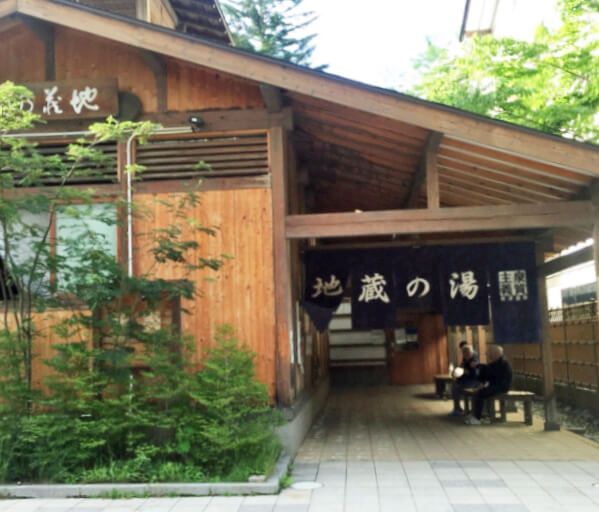
サイトは温泉旅館やホテルについて調べた時点の情報となっています。
記事内容が最新の情報と違っている場合がありますのでご容赦ください。
当サイトの記事等で問題がございましたら直ちに訂正させて頂きます。
大変申し訳ございませんがご連絡を頂けます様、よろしくお願いいたします。
サイト管理者連絡先
sutekinatabinotomo@yahoo.co.jp

